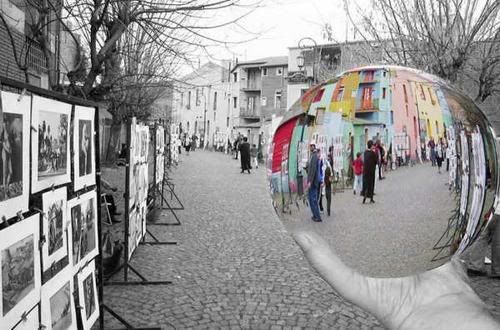
Peasant Wife
In the passage the “Peasant Wedding,” the author William Carlos Williams suggests that the peasant wife is the only serene person in the chaotic wedding festivities. Through the lack of punctuation and word choice William’s techniques unravel the chaotic atmosphere of a wedding day. The passage is also very short causing the audience to wonder if he was only attempting to focus on the serene and recently wedded peasant wife.
One way Williams demonstrates that the peasant wife is the focus of this poem is how he begins the passage by saying, “ Pour the wine bridegroom/ where before you the/ bride is enthroned her hair” (388). Williams makes the groom seem like he needs to cater his new wife. The groom needs to pour his wife some wine because she is “before him” and needs to treat her like a queen. The idea that she is a queen that day is with his word choice of “enthroned” Williams created the image of her hair being a crown and the peasant wife being on a throne or having a ceremony that will mark the very beginning of her rule. Williams also says that her hair is “loose at her temples a head”(388), and her surroundings consist “of ripe wheat is on/ the wall beside her”(388). Which demonstrates that she has long hair, which seems to be relevant to Williams because he was focusing on the peasant wife’s characteristics. As for the “ripe wheat” Williams may be using that as a metaphor, a metaphor that means that the peasant wife is a God because of the development and the presence of the wheat. The Gods are the ones who bless these people with food to harvest and the food to survive.
Williams then chooses to describe what the celebration is like, “the// guests seated at long tables/ the bagpipers are ready/ there is a hound under// the table the bearded mayor/ is present”(388). His lack of punctuation causes the description of the celebration to seem hectic and busy. It also causes the focus to be on ever person stanza by stanza. The stanzas are written like Haikus, which gives each character a piece and meaning to the passage. The celebration consists of bagpipers many guests sitting at long big tables and the mayor of the town is even present. It gives the impression that everyone was invited, even “the hound under// the table.” The next stanza compares the women at the party and the peasant wife’s lack of enthusiasm, “women in their/ starched headgear are// gabbing all but the bride/ hands folded in her/ lap is awkwardly silent simple”(388). The peasant women are talking to each other and having a good time as for the peasant wife she is “awkwardly silent simple.” Which makes us wonder William’s motives for focusing on the bride. William may have realized that the bride is not happy and cheerful on her wedding day and chose to base the passage on the bride.
William’s chooses to end the passage with what is being served and who is serving it to the guests at the wedding celebration, “dishes are being served/ clabber and what not/ from a trestle made of an// unhinged barn door by two/ helpers one in red/ coat a spoon in his hatband”(388). The wedding celebration is not high class by the way Williams describes the type of food being served “clabber and what not,” clabber is milk that has naturally clotted together and is sour. Williams also says that the two helpers are serving the plates of food “from a trestle made of an// unhinged barn door” the peasants use what they have to make the wedding celebration run smoothly. Williams also chose to end the poem by describing what one of the helpers looked like, “one in red/ coat a spoon in his hatband.” The helper was wearing a noticeable red coat and had a spoon in his decorative ribbon wrapped around the hat which gives the impression that even the helpers are attempting to dress up for the occasion, but the bride did not wear anything as noticeable or flashy as the helper. The bride should be the one wearing something that is easily noticeable to everyone but William seemed to pick her out because of her hair and her surroundings.
Overall, William Carlos Williams through word choice, structure, metaphors and the order of the chaotic events he attempts to focus on the quiet bride. William’s began the passage with the bride being the focus and almost God like but as he got into the passage the other characters and surroundings seem to steal the brides serene spotlight. Williams then adds the bride towards the end. Then the serene wife becomes the only person in the passage who does not give into the festivities and the chaos.
Thursday, March 20, 2008
William Carlos Willams "Peasant Wedding" Paper
Labels: Analysis (Formal Essay), Portfolio
Subscribe to:
Post Comments (Atom)



1 comments:
The peasant wedding piece I enjoyed writing about because it also was based on an art piece and poem by William Carlos Williams. We got into depth with his poems and the artwork in class. We even were assigned to poems and presented their meanings to the class. I felt like the poem and the piece gave you a clean slate to create your own theories and ideas about it which I found to be a good piece.
Post a Comment